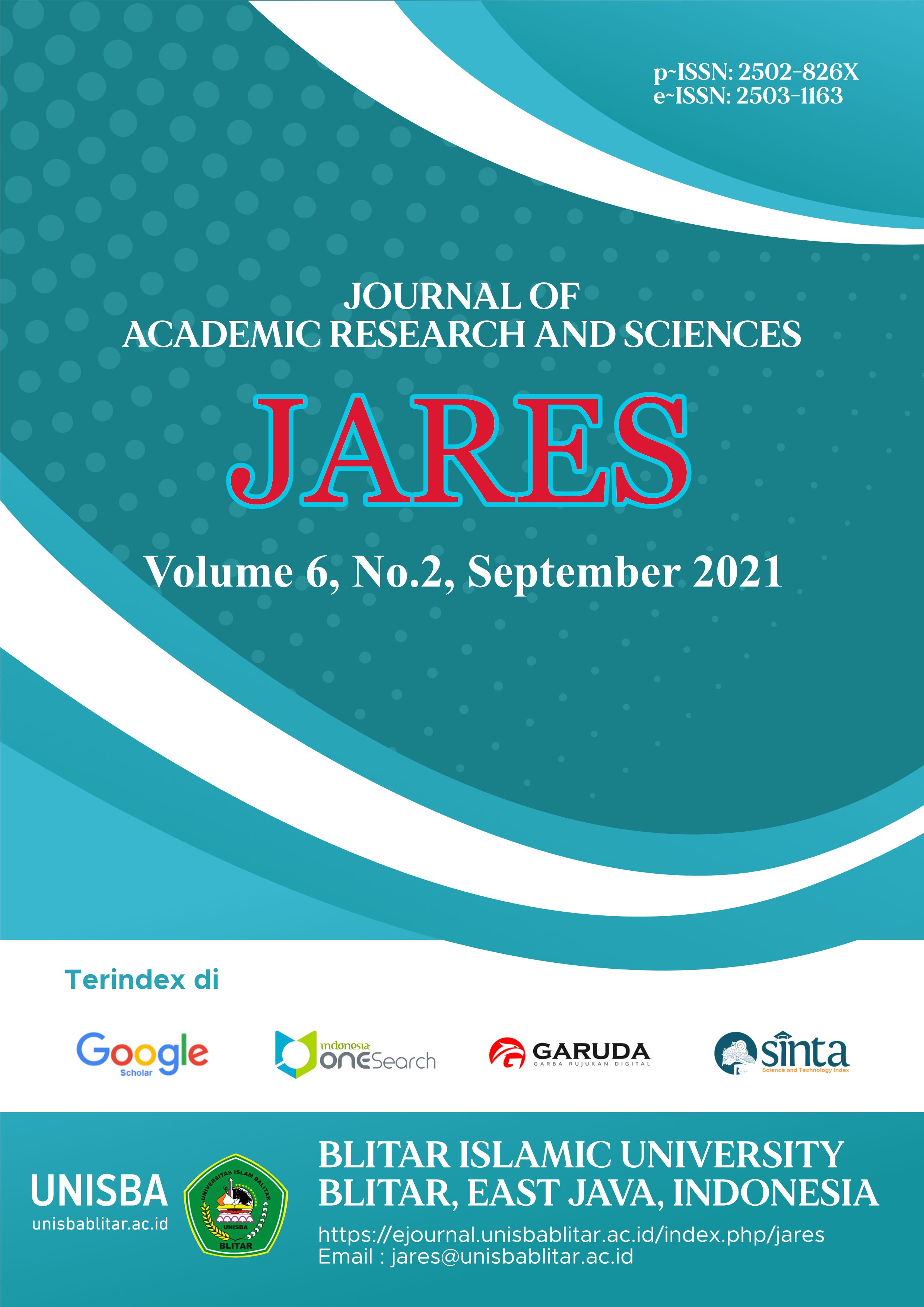The Relationship between Job Stress and Employee Performance in Manufacturing Industry in Indonesia
DOI:
https://doi.org/10.35457/jares.v6i2.1640Keywords:
Employee Performance, Manufacturing Industry, Work Environment, Work StressAbstract
One-fourth of Indonesia's Gross Domestic Product or GDP is from the manufacturing industry sector. Indonesia's government has proactively encouraged companies to increase their production capacity to meet the global demands, leading to strong demand for employees to work harder, affecting the workers' health. Overwork is often associated with fatigue, stress, and various health problems. Moreover, stress due to excessive work is a general problem many industries face and frequently influences workers' performance. Therefore, this research intends to examine the relationship between work stress and workers' performance, particularly in the manufacturing industry in Indonesia. The sample data are collected from ninety-three workers at the staff level across various companies in the manufacturing sector. The relationships between the determining factors and the Employee Productivity are evaluated by using the multivariate regression analysis. At the correlation coefficient of 0.972, we found a statistically strong relationship between the work environment and Stress to the workers' performance. The condition of low performance is attributed to the non-standard working hours and low quality of the relationship between colleagues and their superiors. Finally, the research recommends improved management of workers' stress by companies involving the adoption of flexible working hours and better communication between parties via discussion forums and meetings. Therefore, employees will be more motivated to improve work productivity.
Downloads
References
Materson, I. (1980). Stress at work: A managerial perspective. Glenview, IL: Scott, Foresman.
Shimazu, A., & Kosugi, S. (2003). Job stressors, coping, and psychological distress among Japanese employees: interplay between active and non-active coping. Work & Stress, 17(1), 38-51.
Selye, H. (2013). Stress in health and disease. Butterworth-Heinemann.
MacKay*, C. J., Cousins, R., Kelly, P. J., Lee, S., & McCAIG, R. H. (2004). ‘Management Standards’ and work-related stress in the UK: policy background and science. Work & Stress, 18(2), 91-112.
Bamba, M. (2016). Stress management and job performance in the industries sector of Mali. Journal of Service Science and Management, 9(03), 189.
Ahmed, A., & Ramzan, M. (2013). Effects of job stress on employees job performance a study on banking sector of Pakistan. IOSR Journal of Business and Management, 11(6), 61-68.
Al Rasasi, A., Al Faisal, W., El Sawaf, E., Hussain, H., & Wasfy, A. (2015). Work-related stress among nurses working in Dubai, a burden for healthcare institutions. American Journal of Psychology and Cognitive Science, 1(2), 61-65.
AlMazrouei, H., & Pech, R. J. (2015). Working in the UAE: Expatriate management experiences. Journal of Islamic Accounting and Business Research.
Khan, N., & Khurshid, S. (2017). Workplace stress and employee wellbeing: Case of health care staff in UAE. European Scientific Journal, 13(5), 217-226.
Mathis, L. R., & Jackson, J. H. (2006). Manajemen sumber daya manusia (Human resource management). Jakarta, Salemba Empat.
Hart, S. G., & Staveland, L. E. (1988). Development of NASA-TLX (Task Load Index): Results of empirical and theoretical research. In Advances in psychology (Vol. 52, pp. 139-183). North-Holland.
Sedarmayanti, M., & Pd, M. (2001). Sumber daya manusia dan produktivitas kerja. Bandung: CV. Mandar Maju.
Caruso, C. C., Bushnell, T., Eggerth, D., Heitmann, A., Kojola, B., Newman, K., ... & Vila, B. (2006). Long working hours, safety, and health: toward a National Research Agenda. American journal of industrial medicine, 49(11), 930-942.
Mangkunegara, A. A. P. (2016). Manajemen sumber daya manusia perusahaan. PT. Remaja Rosdakarya.
Osterman, P. (1995). Work/family programs and the employment relationship. Administrative science quarterly, 681-700.
Al-Omari, K., & Okasheh, H. (2017). The influence of work environment on job performance: A case study of engineering company in Jordan. International Journal of Applied Engineering Research, 12(24), 15544-15550.
Downloads
Published
Issue
Section
License
Authors who publish with this journal agree to the following terms:
- Copyright on any article is retained by the author(s).
- Author grant the journal, right of first publication with the work simultaneously licensed under a Creative Commons Attribution License that allows others to share the work with an acknowledgement of the work’s authorship and initial publication in this journal.
- Authors are able to enter into separate, additional contractual arrangements for the non-exclusive distribution of the journal’s published version of the work (e.g., post it to an institutional repository or publish it in a book), with an acknowledgement of its initial publication in this journal.
- Authors are permitted and encouraged to post their work online (e.g., in institutional repositories or on their website) prior to and during the submission process, as it can lead to productive exchanges, as well as earlier and greater citation of published work.
- The article and any associated published material is distributed under the Creative Commons Attribution-ShareAlike 4.0 International License














